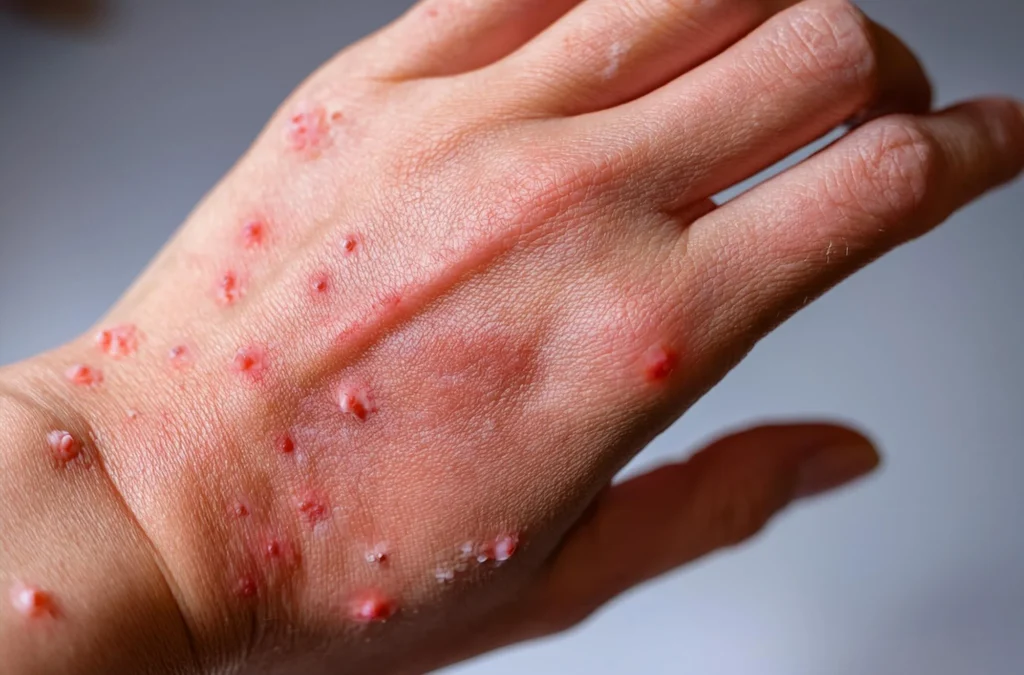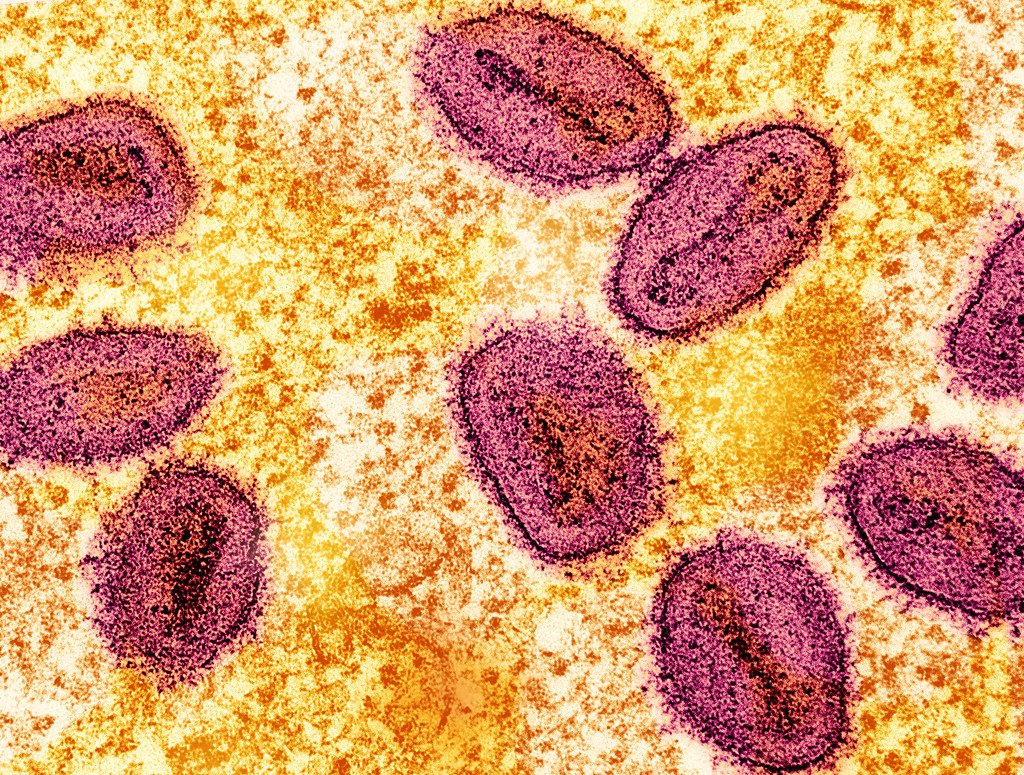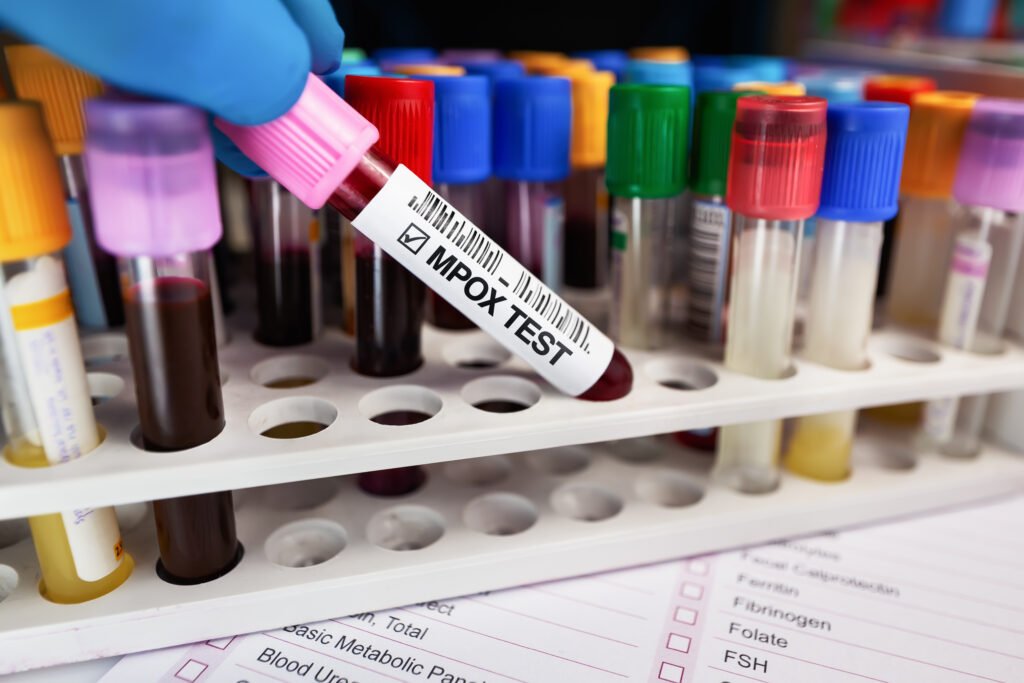Current Situation in the DRC and Africa
The Democratic Republic of the Congo (DRC) is now at the center of a rapidly expanding mpox virus outbreak. Since late 2023, a new variant known as Clade Ib has been spreading across borders into:
- Burundi
- Kenya
- Uganda
- Rwanda
- South Sudan
- Tanzania
💉 Over 650,000 vaccine doses have been distributed in Africa — 90% in the DRC alone.
🧪 Testing labs have expanded from 2 to 23 facilities across 12 provinces. But challenges like armed conflict, insecurity, and a $220+ million funding gap are limiting containment efforts.

❓ What Is Mpox?
Mpox (formerly known as monkeypox) is a zoonotic viral disease caused by the monkeypox virus (MPXV) — a member of the Orthopoxvirus genus, closely related to smallpox.

🔬 Virology and Clade Classification
MPXV is an enveloped, brick-shaped double-stranded DNA virus.
There are two main clades:
- Clade 1 (Congo Basin) – more severe illness
- Clade 2 (West African) – typically milder
🧬 The Clade Ib variant, newly identified, shows higher household and sexual transmission rates.
🔄 Mpox Transmission & Symptoms
How It Spreads
- Direct contact with skin lesions or body fluids
- Respiratory droplets from prolonged close contact
- Contaminated objects (bedding, clothing)
- Sexual and intimate contact in current outbreaks
Symptoms
- Fever, chills, fatigue
- Muscle and back pain
- Swollen lymph nodes
- Rash (macules → pustules → scabs)
- Painful ulcers (mouth, genitals)
🌍 Global Spread & Epidemiology
Mpox was historically endemic to Central and West Africa. Since 2022, global outbreaks have occurred due to Clade IIb, with the virus now spreading in non-endemic countries.
High-risk groups include:
- Healthcare workers
- Immunocompromised people
- Children
- People in crowded or high-contact environments
🧪 How Mpox Is Diagnosed
- PCR tests from lesion swabs are the gold standard
- Diagnosis relies on symptoms, travel history, and contact tracing
- Rapid testing kits are being deployed to improve field response

💊 Mpox Treatment & Antiviral Options
Most mpox infections are mild and self-limiting, but severe cases may require antiviral drugs.
Supportive Care:
- Pain relief
- Fluid support
- Sitz baths, topical anesthetics
- Stool softeners for painful defecation
Antivirals:
- Tecovirimat (TPOXX): 600 mg orally twice a day for 14 days
- Cidofovir: Used with probenecid (kidney toxic)
- Brincidofovir: Less kidney-toxic, monitor liver enzymes
- Trifluridine eye drops: For ocular involvement
- Vaccinia Immune Globulin (VIG): For immunocompromised patients
⚠️ Mpox Complications
Severe mpox may lead to:
- Ocular infections
- Encephalitis
- Bacterial superinfections
- Necrotizing skin lesions
- Urethral obstruction
🛡️ Mpox Prevention Strategies
| Level | Prevention Focus |
|---|---|
| Primordial | Wildlife handling, public education |
| Primary | Vaccination, PPE use |
| Secondary | PCR testing, contact tracing, post-exposure care |
| Tertiary | Long-term care for complicated infections |
🧭 Conclusion
The mpox crisis in the DRC is no longer a local issue — it’s a continental and global threat. Urgent action, including funding, rapid diagnostics, and wider antiviral access, is critical to stop further spread of the virus across Africa and beyond.
📚 References
- Africa CDC & WHO – Africa CDC and WHO Update Mpox Strategy, April 17, 2025
- UpToDate – Treatment and Prevention of Mpox, March 2025
- CDC – Mpox Global Outbreak Data
- Wikimedia Commons – Images under Public Domain / Creative Commons License